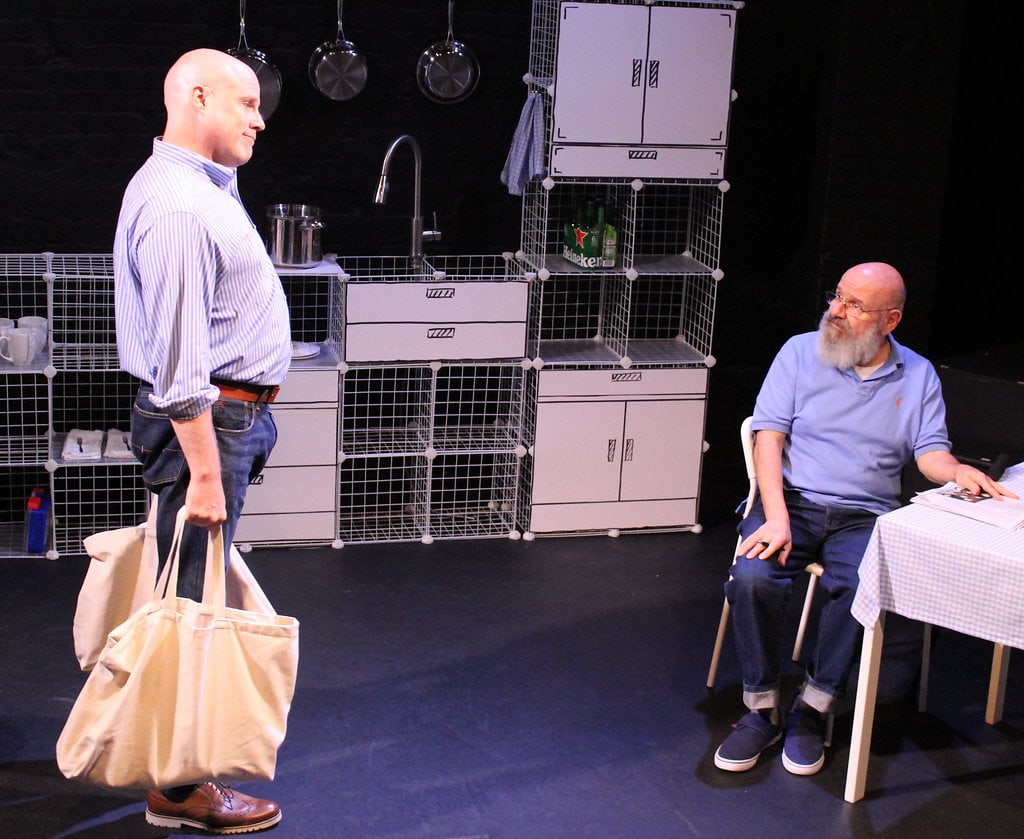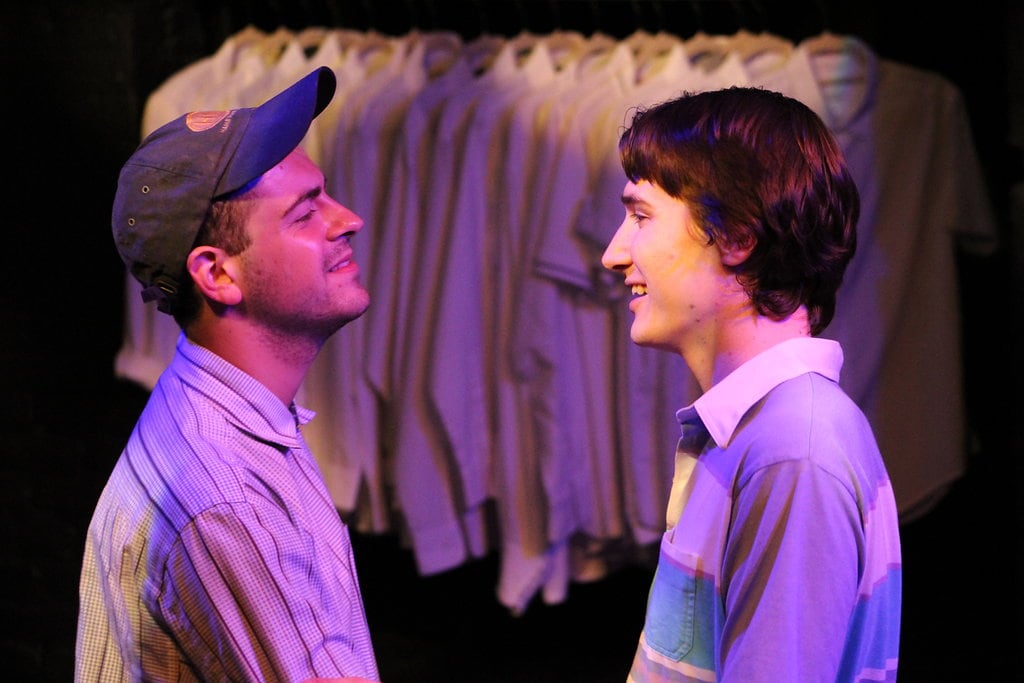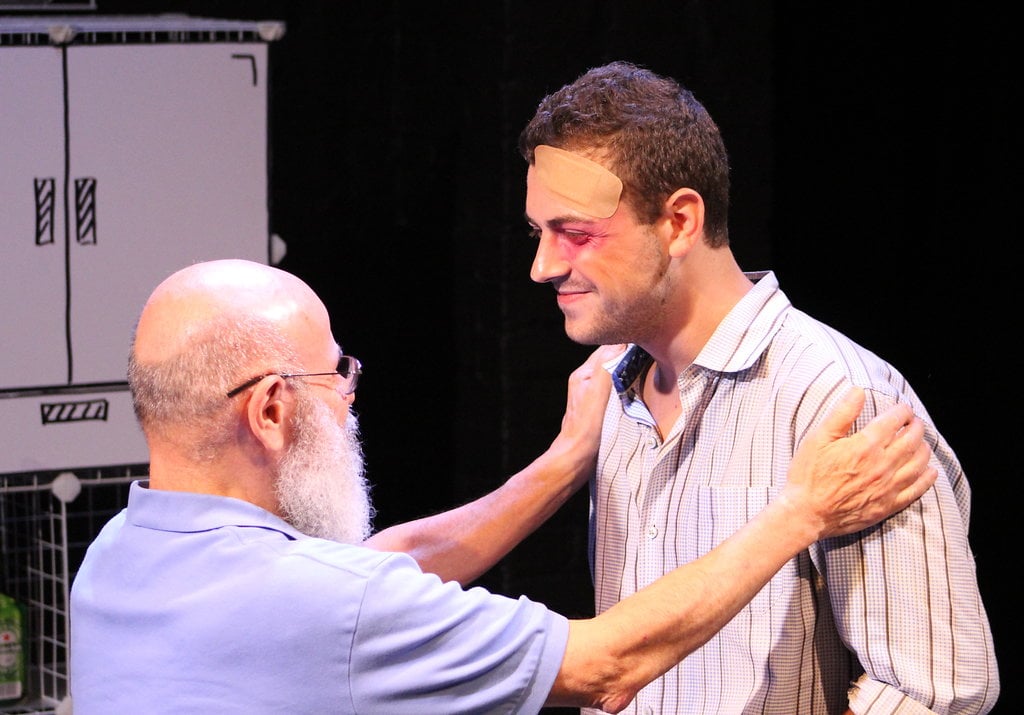“It gets better” is the premise and promise of a multimedia campaign that since 2010 has tried to offer hope and encouragement to LGBTQ+ youth. The message can be life-saving. Nearly all such youth at some point despair because they cannot see a future for themselves. The new play In the Closet by Siegmund Fuchs puts that adage to the acid test, playing out the parable through real-life-time, through times that are bad not better. The engrossing result is a stirring multigenerational comedy about self-worth and self-acceptance that gives moving new meaning to gay coming of age.
Director H. Lee Gable is also artistic director of Rainbow Theatre Project, a six-year-old company that has never before staged the world premiere of a script. “I personally identify with this play a lot,” Gable writes in a program note. “In many ways it is my life.” Judging from the audience reaction on opening night, In the Closet is going to hit home for many others.

The playwright calls the play “a metaphysical comedy,” and its storytelling takes place in what the youngest character calls “a highly functional closet”—because it is equipped with a kitchen. The setting is not literal. “It’s a metaphor,” says the oldest; “run with it.” And Set Designer Greg Stevens has imagined the figurative space with bright, whimsical black-and-white cartoons of Container Store shelving stage left and right and blazing white florescent-lit clothes hanging in neat rows on racks.
Dramaturgically this notional setting proves to be one of the playwright’s two genuine strokes of genius. (The other I’ll get to.) As the play proceeds, the closet functions ever more eloquently and persuasively as an existential frame of mind made tangible on stage—not unlike the mysterious room in which Jean-Paul Sartre set No Exit.
The program identifies the four characters as Man #1, who is in his sixties, Man #2, in his forties; Man #3, in his twenties; and Man #4, eighteen. As Fuchs introduces them to us one by one, we see they are all wearing variations on the same theme: casual blue shirts and denim jeans (Stevens also designed the costumes). As the play opens our eyes to what exactly their relationship is to one another, a wonderfully nuanced texture of hilarity and poignancy unfolds.
The oldest (a delightfully blunt Tim Caggiano) is in the closet because his husband has cancer, and the institutions for treatment and elder care are unwelcoming of same-sex next of kin.
The fortysomething (a fascinatingly fraught Christopher Janson) is in the closet because he is having panic attacks because he is still single and loveless and the gay community is unwelcoming of men his age.
The twentysomething (an impressively adroit Zachary Dittami) is in the closet because he has been raped by two men. In the real world he is testifying at the trial (still bandaged and bruised from the assault), and the prosecutor has told him to pose as straight because juries don’t believe gay men.
The eighteen-year-old (a winningly wide-eyed Patrick Joy) is in the closet because he has just gone to his first gay bar, just hooked up for the first time and had sex with a man, and now is filled with shame and remorse mixed with memories of newfound, long-imagined pleasure.

The narratives that Fuchs weaves from these four lives engage us in a profound drama of ideas and emotions. The men each have flashback scenes, set off stunningly by Sound Designer Cresent Haynes’s music tracks and Lighting Designer James Morrison color shifts. For instance, the eighteen-year-old has a monologue about his first time that in Joy’s delivery is achingly beautiful. And the twenty-something has a flashback replaying in gripping detail his testimony at the trial and the actual details of his rape. The full ensemble takes part: Dittami as the victim/witness, Caggiano as the judge, and Caggiano and Janson as the prosecution and defense attorneys. It is a knockout scene.
“We’re constantly putting ourselves in and out of closets,” as one man says, giving objective credence to this subjective state of mind. “I actually convinced myself I’d never come back here,” says another.
There’s a big reveal at the end of Act One that I wish I could give away because it’s the playwright’s other stroke of genius. As a dramatic device, it not only occasions some of the play’s most sublime humor (the play is packed with laughs); it also invites us into what is most personal and moving at the heart of the play.

Ultimately In the Closet really does affirm that “it gets better”—but in unexpected ways and with a lived-in, life-long reality check. And it is precisely because of that longitudinal honesty, combined with generous wisdom and gentle wit, that many who have their own closet story to tell will here find healing.
Running Time: Two hours 15 minutes, including one intermission.
In the Closet plays through September 15, 2018 at Rainbow Theatre Project performing at the DC Arts Center— 2438 18th Street NW, in Washington, DC. Tickets can be purchased online.




